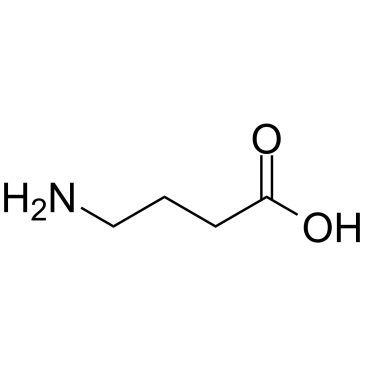γ-Aminobutyric acid |
| カタログ番号GC38010 |
Products are for research use only. Not for human use. We do not sell to patients.

Cas No.: 1956/12/2
Sample solution is provided at 25 µL, 10mM.
γ-Aminobutyric acid (4-Aminobutyric acid) is a major inhibitory neurotransmitter in the adult mammalian brain[1][2], binding to the ionotropic GABA receptors (GABAA receptors) and metabotropic receptors (GABAB receptors)[2]. Human Endogenous Metabolite
[1]. Watanabe M, et al. GABA and GABA receptors in the central nervous system and other organs. Int Rev Cytol. 2002;213:1-47. [2]. Okada R, et al. Gamma-aminobutyric acid (GABA)-mediated neural connections in the Drosophila antennal lobe. J Comp Neurol. 2009 May 1;514(1):74-91. [3]. Chen S, et al. Effects of dietary gamma-aminobutyric acid supplementation on the intestinal functions in weaning piglets. Food Funct. 2019 Jan 2.
Average Rating: 5 (Based on Reviews and 38 reference(s) in Google Scholar.)
GLPBIO products are for RESEARCH USE ONLY. Please make sure your review or question is research based.
Required fields are marked with *




















